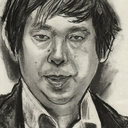[The Research Encouragement Award. Effects of sex hormones on sexual difference of experimental paracoccidioidomycosis].
Keywords
Abstract
Paracoccidioidomycosis is a deep mycosis in Latin America. The causative agent is Paracoccidioides brasiliensis, a thermal dimorphic fungus. The incidence of the disease is much higher in men than in women. Although one explanation is the inhibitive effect of estradiol on fungal growth, its effect on the yeast form growth of P. brasiliensis is still unclear. There is limited information on progesterone and testosterone, which shows weak or no effects. On the other hand, numerous studies on sexual differences between male and female animals have been made with experimental paracoccidioidomycosis. The conclusions however, remain unclear. The present study shows the effects of estradiol (17 beta-estradiol), progesterone and testosterone on the yeast form growth of P. brasiliensis, and the sexual difference of the susceptibility in adult BALB/c mice at the initial stages of infection with view of their estrous cycles and body weight. The inhibitive effects of estradiol, progesterone and testosterone on the yeast form growth of P. brasiliensis were examined using a brain heart infusion broth with different doses of these hormones. The inhibition by estradiol was dose-dependent within the range of physiological concentrations. While the inhibitive effect of progesterone and testosterone was very weak. The phenomenon that estradiol inhibited the yeast form growth of P. brasiliensis may be one important reason for the sexual differences of paracoccidioidomycosis. The initial stages of the yeast form cells of P. brasiliensis infection were evaluated by three inoculation routes: intravenous, intraperitoneal and intratracheal. The mice were divided into 6 groups, including male and female at proestrus, estrus, metestrus- I, metestrus- II and diestrus. Four hours after inoculation, blood samples, peritoneal lavage and pulmonary homogenates were collected and their colony forming units were examined on brain heart infusion agar plates with 1 % of dextrose and 50 mg per liter of chloramphenicol. In all inoculation routes, the clearance of the yeast cells was influenced by the estrous cycles. In particular, female mice at estrus, thought to have high blood estradiol levels, showed a marked clearance of the yeast cells from the blood, peritoneal cavity and lung. All female groups inoculated by any of the three different routes, showed much higher clearance than the male groups. These results suggest that non-specific host resistance to the yeast form cells of P. brasiliensis in females was much higher than in males. There are two explanations for the tendency of higher occurrence of paracoccidioidomycosis in men. One is the inhibitive effect of estradiol on the growth of P. brasiliensis and the other is the superior tendency of non-specific host resistance in females than in males. These two factors seem to have synergistic actions in the sexual difference of paracoccidioidomycosis.


